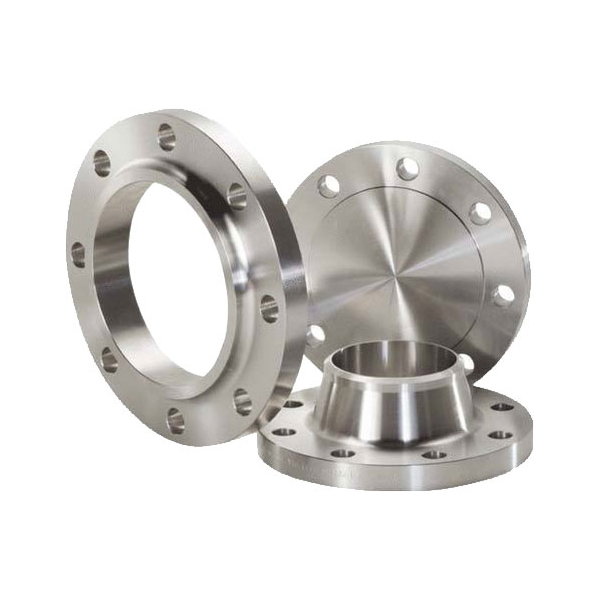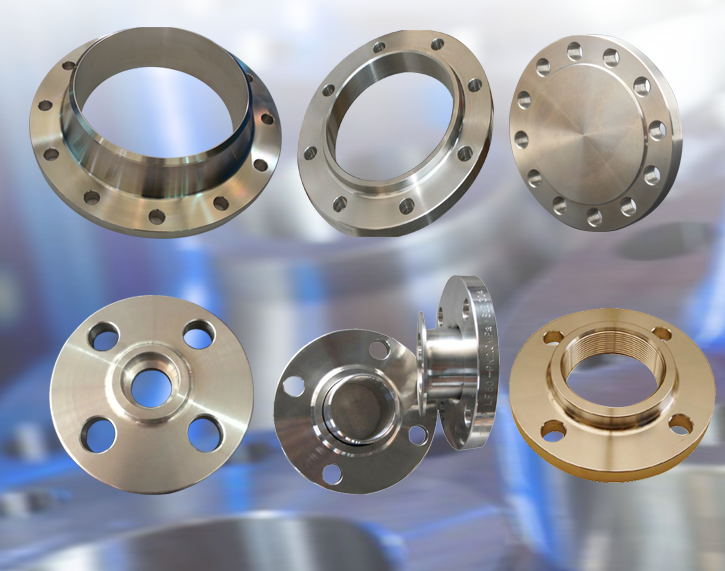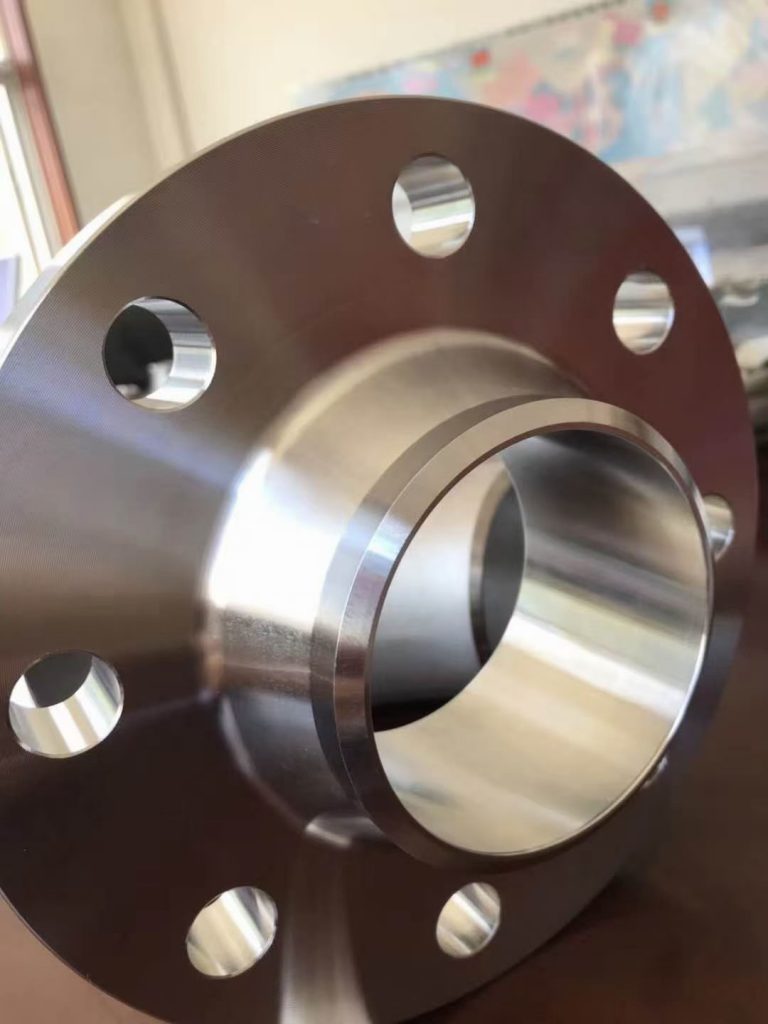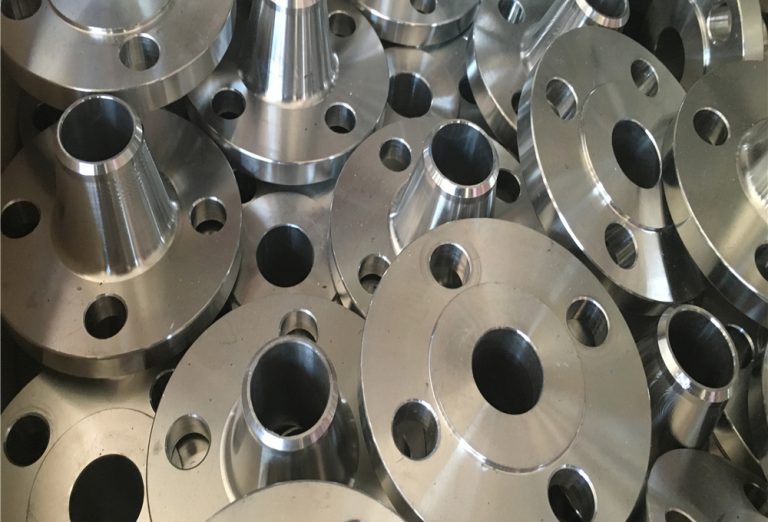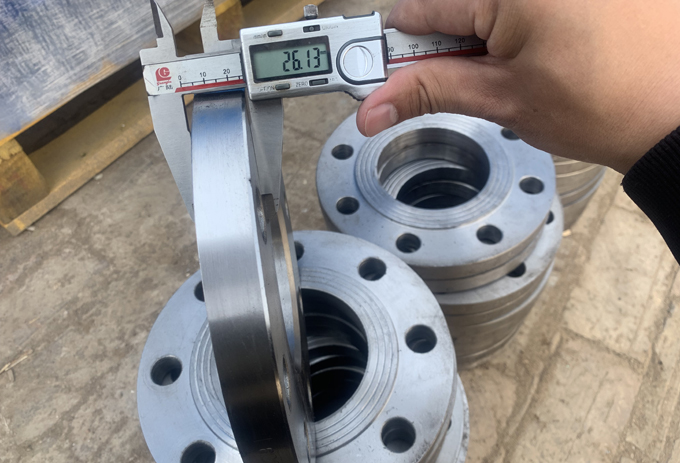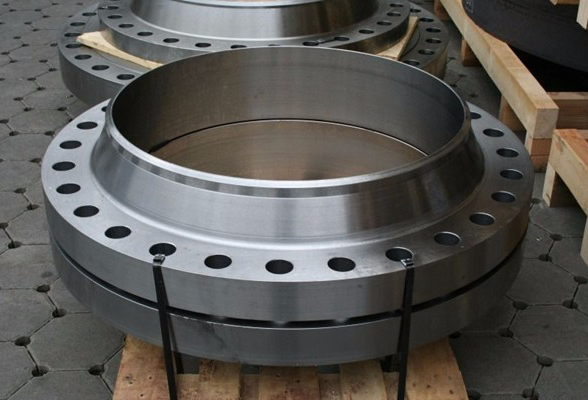Introduction
Accurate flange dimensions are of utmost importance in pipeline connections, as they play a critical role in ensuring optimal functionality and safety. The proper alignment and connection of pipes are essential to prevent leaks, reduce pressure loss, and maintain the overall integrity of the pipeline system.
When flange dimensions are not accurately measured and implemented, it can lead to various issues that can compromise the performance and safety of the pipeline. One significant concern is leakage. Gaps or misalignments caused by improper flange dimensions can result in the leakage of fluid or gas, leading to financial losses and posing serious safety risks. Uncontrolled releases of hazardous substances can harm the environment, workers, and nearby communities.
Furthermore, inaccurate flange dimensions can result in increased pressure loss within the pipeline system. This can negatively impact the efficiency and effectiveness of fluid or gas transportation, leading to higher energy consumption and reduced throughput.

In addition to functionality concerns, safety is of utmost importance. Flange dimensions that do not meet industry standards and specifications can compromise the structural integrity of the pipeline. This can lead to risks such as pipe deformation, buckling, or catastrophic failure, with severe consequences, including injuries, property damage, and operational downtime.
To ensure accurate flange dimensions, adherence to industry standards and specifications is crucial. Organizations such as ANSI, ASME, DIN, and JIS provide guidelines and standards that help engineers and manufacturers select appropriate flange dimensions for different applications. These standards take into account factors such as pipe size, pressure rating, temperature conditions, and material compatibility.
In conclusion, accurate flange dimensions are vital for the optimal functionality and safety of pipeline connections. Proper alignment, leak prevention, reduced pressure loss, and maintained structural integrity are essential for ensuring the safe and efficient operation of pipeline systems. Adhering to industry standards and specifications is a critical step in selecting the appropriate flange dimensions and minimizing the risks and issues associated with improper fittings.
I. Exploring Flange Dimensions and their Numerical Values
1. Outside Diameter (OD)
Outside Diameter (OD) is the main dimension used for pipe connections. It refers to the measurement of the outermost edge of the pipe, typically expressed in inches or millimeters. The OD plays a crucial role in determining the compatibility and proper fit of pipes with other pipeline components such as flanges, valves, and fittings.
The OD is an essential consideration when selecting flanges, as it determines the size and type of flange required for a specific pipe connection. Flanges are designed to match the OD of the pipe to ensure a secure and leak-free joint. By accurately measuring the OD and selecting the corresponding flange with a matching inner diameter, a strong and reliable connection can be achieved.
The OD also affects the overall strength and durability of the pipe. A larger OD generally indicates a thicker and stronger pipe, capable of handling higher pressure and supporting heavier loads. Proper selection and matching of the flange’s OD with the pipe’s OD ensure that the joint can withstand the expected operating conditions safely.
Moreover, the OD is used as a reference point for various design calculations and specifications. It helps in determining the flow capacity of the pipe, calculating the surface area for insulation requirements, and estimating the weight and cost of the pipe material.
In summary, the Outside Diameter (OD) is a critical dimension for pipe connections. It determines the compatibility and proper fit of pipes with other pipeline components, such as flanges. Accurately measuring and matching the OD with the appropriate flange ensures a secure and leak-free joint, while also considering the strength and durability requirements of the pipe.
2. Inside Diameter (ID)
Inside Diameter (ID) refers to the bore diameter of a pipe, which measures the size of the inner opening or passageway. It is an important dimension that determines the flow capacity and fluid-carrying capacity of a pipe.
The ID measurement is taken as the distance across the inner wall of the pipe, typically expressed in inches or millimeters. It plays a significant role in determining the pipe’s capacity to accommodate the required fluid flow rate and is essential for selecting appropriate fittings, valves, and flanges that match the pipe’s ID.
The ID directly affects the flow characteristics of the pipe, such as velocity, pressure drop, and flow rate. A larger ID allows for a greater volume of fluid to pass through the pipe within a given time, resulting in higher flow rates and lower pressure drop. On the other hand, a smaller ID restricts the flow and may cause increased pressure drop and reduced flow rates.
When selecting flanges or fittings for a pipe system, matching the ID of the pipe to the corresponding components is crucial for a proper fit. The inner diameter of a flange or fitting should match the ID of the pipe to ensure a smooth and unobstructed flow path, preventing any restrictions or turbulence that could affect the flow performance.
Furthermore, the ID is considered in various engineering calculations, such as determining the pipe’s cross-sectional area, flow velocity, and flow rate. These calculations are essential for designing and analyzing pipe systems to ensure efficient and effective fluid transport.
In conclusion, the Inside Diameter (ID) of a pipe is a critical dimension that determines the pipe’s flow capacity and fluid-carrying capacity. It is crucial for selecting suitable fittings and components that match the pipe’s ID, ensuring a smooth and unobstructed flow path for efficient fluid transport. Proper consideration of the ID is vital for determining flow characteristics and optimizing the performance of a pipe system.
3. Bolt Hole Diameter
Bolt Hole Diameter refers to the diameter of the holes present on a flange used for tightening bolts. These holes are strategically placed along the circumference of the flange to allow for the secure assembly of the flange with its mating flange or other equipment.
The bolt hole diameter is typically specified in inches or millimeters and determines the size of the bolts that will be used to fasten the flange. It is crucial to ensure that the bolt hole diameter matches the size of the bolts intended for use. Using bolts with a smaller diameter may result in weak and insecure connections, while bolts with a larger diameter may not fit properly through the holes, causing misalignment or inability to tighten the flange adequately.
In addition to ensuring proper bolt fit, the bolt hole diameter also affects the strength and stability of the joint. The choice of bolt-hole diameter is based on the required strength and rigidity of the connection. Larger bolt-hole diameters allow for the use of larger and stronger bolts, which can accommodate higher loads and pressures. Smaller bolt-hole diameters, on the other hand, are suitable for applications with lower loads and pressures.
It is important to follow industry standards and guidelines when selecting the appropriate bolt-hole diameter. Various standards organizations, such as ANSI, ASME, and DIN, provide specifications and recommendations for bolt sizes and hole diameters, ensuring compatibility and safety in flange connections.
In summary, the Bolt Hole Diameter is the diameter of the holes on a flange used for tightening bolts. It is crucial to select the correct bolt size that matches the bolt hole diameter to ensure a secure and properly aligned flange connection. The bolt hole diameter also plays a role in determining the strength and stability of the joint, making it essential to follow industry standards and guidelines for selecting the appropriate bolt hole diameter.
4. Bolt Hole Spacing
Bolt Hole Spacing refers to the distance or spacing between bolt holes on a flange. It is an important dimension that determines the arrangement and distribution of bolts used to fasten the flange to its mating flange or equipment.
The bolt-hole spacing is typically measured from the center of one bolt hole to the center of the adjacent bolt hole. It is specified in inches or millimeters and can vary depending on the flange design, size, and industry standards.
The spacing between bolt holes is critical for maintaining the integrity and strength of the flange connection. Adequate spacing ensures that the bolts are evenly distributed along the circumference of the flange, providing uniform clamping force and preventing the flange from distorting or experiencing uneven loading.
In addition, proper bolt-hole spacing helps to ensure proper alignment of the flange with its mating flange or equipment. When the bolt holes are spaced correctly, it allows for smooth insertion and tightening of the bolts, ensuring a secure and leak-free joint.
Bolt hole spacing is typically specified by industry standards or customer requirements. Some commonly used standards include ANSI, ASME, and DIN, which provide guidelines for the spacing of bolt holes based on flange size, pressure rating, and application.
It is important to adhere to the specified bolt-hole spacing and not deviate from the recommended guidelines. Using incorrect or non-standard bolt-hole spacing can compromise the integrity of the flange connection, leading to leaks, reduced performance, or even failure of the joint under operating conditions.
Overall, bolt-hole spacing is a critical dimension that determines the arrangement and distribution of bolts on a flange. Proper spacing ensures uniform clamping force, even loading, and correct alignment, leading to a secure and reliable flange connection. Compliance with industry standards and guidelines is crucial for selecting the appropriate bolt-hole spacing for a given flange application.
5. Flange Face-to-Face Dimension
The Flange Face-to-Face Dimension refers to the distance between two connected flanges, typically measured along the centerline of the pipeline. It is an essential dimension that directly impacts the overall length of a pipeline.
When two flanges are connected, the flange’s face-to-face dimension determines the amount of space required for the pipeline to connect the two components. It is crucial to accurately measure and specify this dimension to ensure precise alignment of the pipeline and proper fit of the flanges.
The flange face-to-face dimension is typically specified in inches or millimeters and can vary depending on the flange size, flange type (such as slip-on, weld neck, etc.), and industry standards.
This dimension directly affects the overall length of a pipeline. When designing or installing a pipeline system, the flange face-to-face dimension is considered to ensure that the pipeline is appropriately sized and fits within its intended space. It is crucial to account for the flange face-to-face dimension to prevent issues such as misalignment or insufficient space between connected components.
Industry standards, such as ANSI, ASME, and API, provide guidelines for flange face-to-face dimensions based on flange size, ratings, and application requirements. These standards ensure the compatibility and interchangeability of flanges across different manufacturers and systems.
It is important to note that the flange face-to-face dimension can affect the overall cost and efficiency of a pipeline system. A longer face-to-face dimension may require more materials and labor for pipe installation, while a shorter dimension can potentially lead to misalignment or insufficient space for operation and maintenance activities.
In summary, the flange face-to-face dimension is the distance between connected flanges, measured along the centerline of the pipeline. It directly impacts the overall length of a pipeline and affects the fit, alignment, and functionality of the flanges. Accurate measurement, specification, and adherence to industry standards are essential to ensure proper installation, reliable operation, and optimal performance of the pipeline system.
II. Standards and Specifications for Flange Dimensions
A. Explanation of commonly used standards
ANSI/ASME (American Standard):
- The ANSI/ASME standards for flanges play a crucial role in the American industry and are widely used globally.
- These standards provide important guidelines for flange dimensions, materials, pressure ratings, and face types.
- Numerical references: ANSI/ASME flange standards typically start with the letters “B16,” followed by a specific numerical reference, such as B16.5 for pipe flanges and flanged fittings or B16.47 for large-diameter flanges.
- Measurements: ANSI/ASME flange standards use inch-based dimensions, specifying flange sizes, bolt hole patterns, flange face types (e.g., raised face, flat face), and other relevant dimensions.
DIN (German Standard):
- DIN flange standards originate from Germany and are widely used in many European countries.
- These standards provide specifications for flange dimensions, pressure ratings, materials, and facing types.
- Numerical codes: DIN flanges are designated by alphanumeric codes, such as DIN 2573, DIN 2501, or DIN 2632.
- Dimensions: DIN flange dimensions are typically provided in metric measurements, including flange sizes, bolt hole patterns, flange face types (e.g., type A, type B, type C), and other necessary dimensions.
JIS (Japanese Industrial Standards):
- JIS standards, established by the Japanese Industrial Standards Committee, are commonly used in Japan and also found in specific industries worldwide.
- These standards specify various aspects, including flange dimensions, materials, pressure ratings, facing types, and manufacturing tolerances.
- Numerical values: JIS flange dimensions are denoted by numerical values such as 5K, 10K, 16K, representing the flange pressure rating in kilograms per square centimeter (kg/cm²).
- Flange measurements: JIS flange dimensions are typically expressed in millimeters, covering flange sizes, bolt-hole patterns, facing types, and other necessary dimensions.
It is important to consult the specific ANSI/ASME, DIN, or JIS standards to obtain detailed and accurate information on respective numerical references, measurements, and dimensions for flanges. These standards ensure compatibility, interchangeability, and appropriate selection of flanges for different applications, ensuring the safe and efficient functioning of piping systems.
B. Importance of selecting appropriate flange dimensions based on specific standards and specifications:
Selecting the appropriate flange dimensions based on specific standards and specifications is crucial for several reasons:
- Compatibility and Interchangeability: Following the designated standards ensures that flanges from different manufacturers are compatible and interchangeable. This allows for easy replacement, repair, and maintenance of flange components within a piping system.
- Proper Fit and Alignment: The correct flange dimensions ensure a proper fit and alignment between the flanges and the connecting pipes or equipment. This helps to prevent leaks, misalignment, and potential damage to the system.
- Pressure and Temperature Ratings: Flanges have specific pressure and temperature ratings based on their dimensions, construction, and materials. Adhering to the appropriate specifications ensures that the flanges can handle the intended pressure and temperature conditions of the system without failure or compromise.
- Sealing and Gasketing: Flange dimensions impact the selection and effectiveness of gaskets used for sealing the connection. By selecting the proper flange dimensions, the gasket can be properly compressed and provide an effective seal, preventing leakage.
- Safety and Reliability: Using flange dimensions compliant with standards promotes safety and reliability in the operation of piping systems. Properly sized and rated flanges reduce the risk of leaks, integrity issues, and potential accidents, ensuring the overall performance, longevity, and integrity of the system.
- Regulatory Compliance: Many industries, such as oil and gas, chemical, and power generation, have specific regulations and codes that dictate the use of standardized flange dimensions. Complying with these regulations ensures legal compliance and adherence to industry best practices.
- Ease of Procurement: Specifying flanges based on recognized standards enables easier procurement of flange components. Manufacturers and suppliers are familiar with these standards, making it simpler to source the required flange dimensions.
In summary, selecting appropriate flange dimensions based on specific standards and specifications ensures compatibility, proper fit, alignment, and sealing. It guarantees the system’s safety, reliability, and compliance with industry regulations. Properly sized flanges contribute to the overall efficiency, longevity, and integrity of the piping system.
III. Considerations for Choosing Accurate Flange Dimensions
A. Factors influencing the selection of flange dimensions:
- Pipe working conditions and stresses: The operating conditions of the piping system, such as pressure, temperature, and fluid flow rates, play a significant role in determining the appropriate flange dimensions. These factors influence the required strength, sealing capability, and structural integrity of the flange. Higher pressures or temperatures may necessitate larger and stronger flanges to handle the working stresses effectively.
- Fluid characteristics and compatibility: The type of fluid being transported through the piping system can impact the selection of flange dimensions. Factors such as corrosiveness, viscosity, abrasiveness, and temperature sensitivity of the fluid can influence the choice of flange materials and dimensions. Wide temperature variations or chemically aggressive fluids may require special materials and specific flange dimensions to ensure compatibility and long-term reliability.
- Compliance with relevant standards and codes: It is crucial to consider the applicable industry standards, regulations, and codes when selecting flange dimensions. Standards such as ANSI/ASME, DIN, JIS, or specific codes like ASME B31.1 for power piping or ASME B31.3 for process piping provide guidelines for selecting flanges based on pressure ratings, materials, dimensions, and other requirements. Compliance with these standards ensures the safety, performance, and legal compliance of the piping system.
- System Maintenance and Repair: Accessibility for maintenance and repair is an essential factor when selecting flange dimensions. The ease of disassembly, replacement, and reassembly of flange components should be considered to minimize downtime and facilitate efficient maintenance activities. Choosing flange dimensions that accommodate ease of maintenance and repair can save time and costs in the long run.
- Future Expansion and Flexibility: Consideration should be given to potential future changes or expansions in the piping system. Flange dimensions that allow for easy modifications, additions, or connections to new equipment or piping sections can enhance flexibility and adaptability, reducing the need for extensive modifications or replacements in the future.
- Industry-specific requirements: Certain industries may have specific requirements or considerations that influence the selection of flange dimensions. For example, industries dealing with cryogenic systems, high-pressure systems, or corrosive environments may have specialized requirements for flange dimensions to ensure system safety and performance.
- Manufacturer and Supplier Availability: It is essential to consider the availability of flange dimensions from reputable manufacturers and suppliers. Selecting commonly available flange dimensions helps ensure the availability of replacement parts, reduces lead times, and provides greater options for sourcing components.
By considering these factors, engineers and designers can make informed decisions regarding the selection of accurate flange dimensions that align with the specific requirements of the piping system, ensuring optimal performance, safety, and long-term reliability.
B. The significance of consulting industry standards and experts for accurate flange dimension selection:
- Ensuring Safety and Compliance: Industry standards and codes provide guidelines and requirements to ensure the safe and reliable operation of piping systems. Consulting these standards helps ensure that the selected flange dimensions meet the necessary safety and performance criteria, minimizing the risk of accidents, leaks, or failures. Expert advice can also help to interpret and implement these standards correctly.
- Meeting Design and Performance Requirements: Flange dimensions play a crucial role in maintaining the structural integrity and functionality of the piping system. By consulting industry experts, designers can ensure that they select flange dimensions that meet the specific design and performance requirements of the system, such as pressure rating, temperature range, and fluid compatibility. These experts can provide insights based on their experience and knowledge to recommend the most suitable flange dimensions.
- Avoiding Costly Mistakes and Re-Work: Incorrectly sized flanges can lead to significant problems, including leaks, inefficiencies, or the need for costly modifications or replacements. Consulting industry experts helps mitigate the risk of errors in flange dimension selection, reducing the likelihood of costly mistakes. Experts can provide guidance on the appropriate flange dimensions based on their expertise and experience, helping to avoid re-work and associated expenses.
- Identifying Specialized Requirements: Different industries and applications may have specific requirements or considerations when selecting flange dimensions. Consulting experts familiar with these industries and applications helps ensure that any specialized requirements are adequately addressed. These experts can provide insights into factors like high pressures, extreme temperatures, corrosive environments, or particular fluid characteristics that may require special considerations in flange dimension selection.
- Access to Product Knowledge and Market Trends: Industry experts and suppliers have access to extensive product knowledge and stay updated on the latest market trends. Consulting them can provide valuable information on the availability, performance, and suitability of different flange dimensions in the market. This information helps in making informed decisions, considering the latest technologies, materials, and advancements in flange design and manufacturing.
Overall, consulting industry standards and experts is crucial in accurately selecting flange dimensions. Their knowledge and experience help ensure compliance with safety standards, meet design requirements, avoid mistakes, and access the most suitable options in the market. This consultation ultimately leads to the selection of accurate flange dimensions that contribute to the overall efficiency, reliability, and longevity of the piping system.
Conclusion
In conclusion, accurate flange dimensions are crucial for the safe and efficient operation of pipeline connections. Consulting industry standards and experts is essential in ensuring compliance, meeting design requirements, and avoiding costly mistakes. Hebei Yanhao is a trusted partner that provides flanges with precise numerical values, backed by extensive product knowledge and experience. To learn more about our offerings and discuss your specific flange requirements, we invite you to visit our website and get in touch with our team. Together, we can find the right solutions for your piping system needs.
Lewis Liu
Hello, I am Lewis Liu, a professional sales engineer with over ten years of experience in the flange fittings industry. I am highly knowledgeable in flange selection, installation, and maintenance. I am passionate about providing customers with the best solutions to ensure their pipeline systems run smoothly, safely, and reliably.
If you have any questions or concerns regarding flange fittings for your pipelines, whether it’s about selection, material choice, specification requirements, or any other aspect, please feel free to contact me at any time. I am committed to offering professional advice and assistance to help you make informed decisions and meet your needs.

